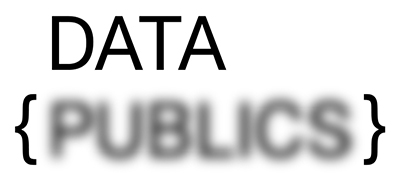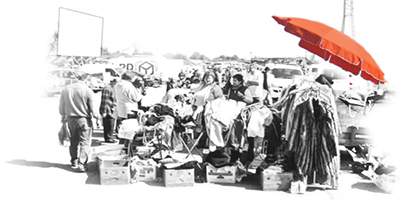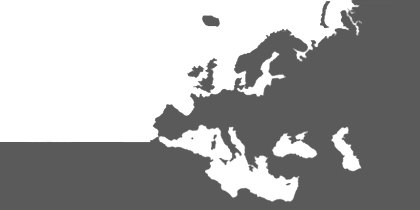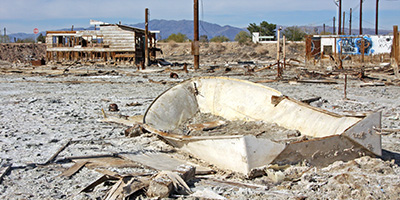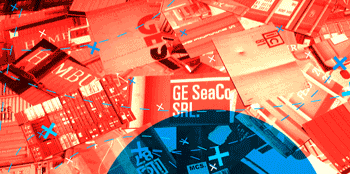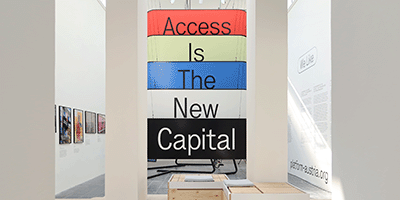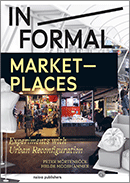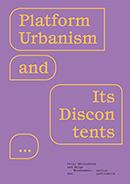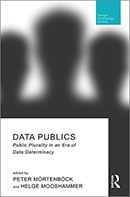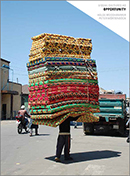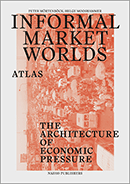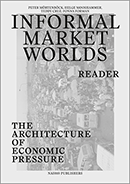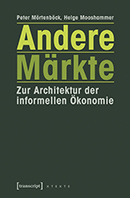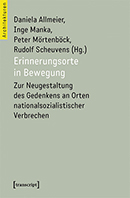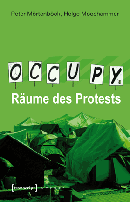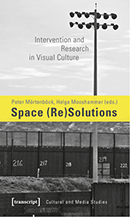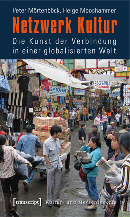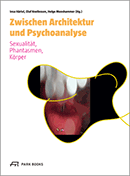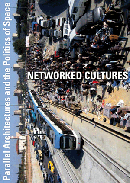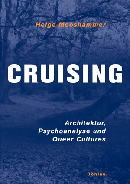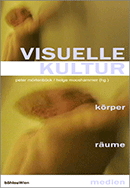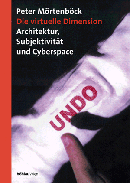RESEARCH
DATA PUBLICS
-
Public plurality in an era
of data determinacy
OTHER MARKETS
--
Mapping typologies and conditions of informality:
How informal markets intersect with global governance
NETWORKED CULTURES
--
The struggle for new forms of artistic practice in an era of global deregulation
WORLD OF MATTER
--
An ecological view on resource politics
SEA OF MARBLE
--
Looking out to the sea: A navigational convergence on the imaginary and the realities of the sea
EXHIBITIONS
La Biennale di Venezia - 17th International Architecture Exhibition 2021
XX Architecture and Urbanism Biennial - Chile 2017
Ephemeral Urbanism
World of Matter
@ HMKV Dortmund
@ James Gallery New York
@ Ellen Gallery Montreal
@ Nash Gallery Minnesota
Networked Cultures -
documentary
Gunners & Runners
Trading Places
Networked Cultures
Gone City
Temporary Zones
Operation Desert
You'll Never Walk Alone
TRADING PLACES
exhibited @
VUE (Vitrine Urbaine d’Expertise / Window for Urban Expertise), Paris
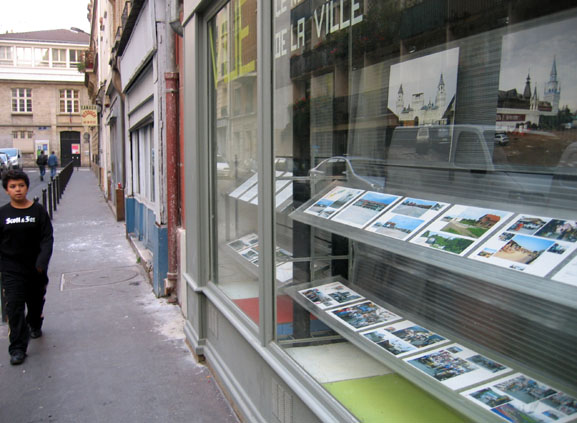
VUE du quotidien / n°2 - Networked Cultures
Opening: 8 November 2008, 6pm
Location: VUE, 4 rue du Canada, Paris 18ème
Keeping its connections with La Chapelle area and the North of Paris, l’atelier d’architecture autogérée (aaa) has recently moved again to the “ground floor”, 4 rue du Canada, into a “space with a vue/view/sight ” on the everyday life of the area.The window of this former shop has been refurbished into a VUE (Vitrine Urbaine d’Expertise / Window for Urban Expertise) on the everyday life: an exhibition of “vues partielles /partial views” and different “points de vue/viewpoints” which will allow those interested to participate in a civic debate on the urban, social, political, symbolic, political conditions of our life in the city.
TRADING PLACES
Informal markets generate sites of shadow-globalisation based on a deterritorialisation of cultures. Many of these markets are hubs of migratory routes whose idiosyncratic complexity reflects the tension between traditional economies, black markets and the new conditions of deregulated and liberalised capital markets. The dynamics of these sites highlight the network character of the radicalised and deregulated flows of people, capital and goods worldwide. One of the effects this network phenomenon creates is an increased transnationalisation and hybridisation of cultural claims and expressions. In view of growing cultural homogenisation, this brings to the fore one of the most potent traits of informal markets: the sprawl of a myriad of indeterminate parallel worlds existing next to each other or literally within the same place. The international research platform Networked Cultures (www.networkedcultures.org) presents three different informal markets as micro-sites of paradoxical and indeterminate cultural production: Izmailovo Market Moscow, Istanbul Topkapi and Arizona Market Brčko (Bosnia and Herzegovina).
Parallel economies: Izmailovo Market
Moscow Izmailovo is the largest open market in Europe, its foot print three times larger than the Moscow Kremlin. More than 100,000 workers, traders and buyers frequent the location on a busy weekend. The former site of the historic Izmailovo village and the Royal Estate 15 kilometres east of the Kremlin, Izmailovo served as one of the main venues to host the XXII Olympic Games in 1980.
As public investments into the sports facilities decreased after the Olympic Games and especially after the demise of the USSR, traders began to move into vacated parts of the complex and to use ever expanding sectors of the adjacent outdoor area. The stadium and its new amenities are now completely engulfed and dwarfed by thousands of small retail spaces of what is one of the largest European hubs for goods, capital and humans. More than 80 hectares of retail area, Moscow’s Izmailovo market, and its Cherkoizovsky Rynok in particular, are one of the most important nodes in the transnational suitcase trade between Eastern Europe, China, Uzbekistan, Tajikistan, the Caucasus region and Turkey. Traders travel long distances in crowded overnight buses or lorries to buy large amounts of goods which they sell on at domestic markets. One of the ironies of Izmailovo consists in the fact that its sprawling main part is itself masked by a quixotic mis-en-scene: A maze of wooden turrets and walkways, the souvenir market Vernisazh is a popular tourist attraction in Moscow. It is located towards the southern tip of the market, shielded off from the hustle and bustle of the adjoining subsistence economies through a mock wooden fortress which provides the backdrop to a bewildering array of matrioshka stalls, Soviet memorabilia, Russian handicraft, Central Asian rugs, antique busts, Georgian shashliki, street performers, and bear shows.
Arizona Market: Inter-ethnic collaboration in Brčko/BaH
Arizona Market, one of the best known open markets in the Balkans, is based in the district of Brčko, a separate entity at the intersection of Bosnian, Croatian and Serbian territories. 2,500 stalls and shops sprawling over 25 hectares of land, 3 million visitors per year and some 20,000 people employed by the market. For some, it is a model for all multi-ethnic communities in the country, for others the largest open air shopping mall in southeast Europe. And for others again it is hell on earth. The difference in perspective rests upon the numerous stages and transformations of what is commonly called Arizona Market. Initially, Arizona emerged as a black market at a US military checkpoint along the main road connecting Sarajevo and eastern Croatia via Tuzla and Orašje in post-Dayton Bosnia. The informal trade was fostered by the international SFOR troops as a way of encouraging inter-ethnic collaboration and economic growth. As the shanty of mobile stands, livestock, produce stalls, CD shops, motels and night clubs flourished and grew into a bustling site of commercial activities, the area also saw the arrival of unauthorised dwellings ranging from improvised shelter to single-family houses. The illicit building structures were set to be the harbingers of a self-organised urbanisation process. At the same time Arizona increasingly attracted human trafficking and the trade of drugs and weapons. When the Brčko District came into existence in 2000, political decisions were made to confer legal status on the market, to formalise it and to collect revenues from the commercial establishments. After years of heavy struggle against the proposed master plan, large parts of the initial structures were cleared, bars and brothels were shut down, and a vast private shopping mall erected on the adjacent piece of land.
Istanbul Topkapi: Trading among ruins
In 2005 a bustling site of high-contrast undertakings emerged in Istanbul’s central district of Topkapi: The process of Istanbul’s rapid urban transformation saw the strong political gestures of reconstructing the Byzantine city walls and building the tracks of a state-of-the-art low-floor tram suddenly faced with kilometres of informal trafficking. This spontaneous black market took place just outside the gates of the historic city, along the construction sites of the high-capacity interchange between Topkapi Edirnekapi Caddesi and the eight lane Londra Asfalti. Squeezed in between newly delivered and derelict building material, busy freeways and almost impassable heaps of crushed stone, tens of thousands of people formed an endlessly meandering and pulsating structure. The informal market provokes an archaic model of the city’s organic emergence at the intersection of traffic routes and trading places. In the case of Topkapi, however, trade flourishes in the shadow of official urban planning, transforming the latter into a vehicle of informality. The wide spread impact arising from this informal economy is not confined to the market’s own dynamics, though. It is amplified by a series of secondary services linked to it: shuttle buses, street kitchens, intermediaries, suppliers, vendors and occasional street performances. It is through this bizarre entanglement of modern transport systems, symbolic sites of national renaissance and short-lived subsistence economies, through the complexities of legal work, third economies and informal trade, that this temporary market accounts for more than just an incidental set of happenings. Certainly, the mutual permeability of formal and informal structures, the aberrant utilisations of urban space and the acceleration of spontaneous cultural eruptions designate the emergence of new urban networks, trajectories and hierarchies.
http://urbantactics.wordpress.com/category/exhibition/
BOOKS
